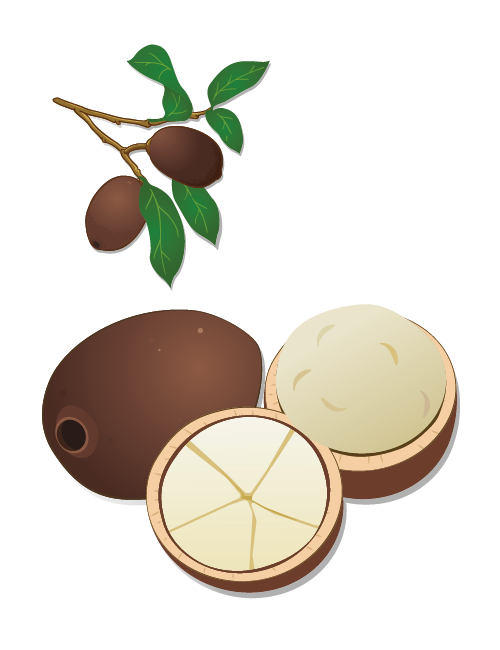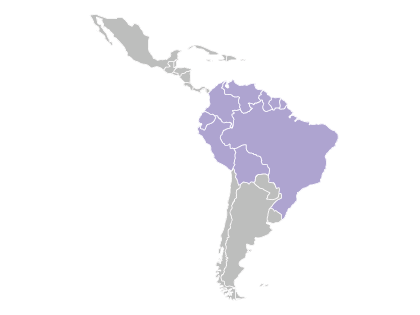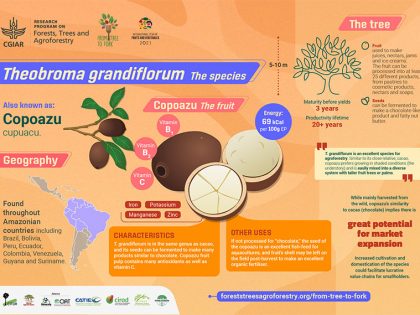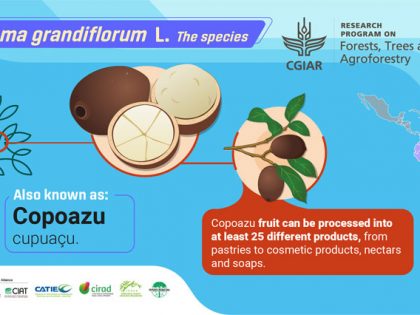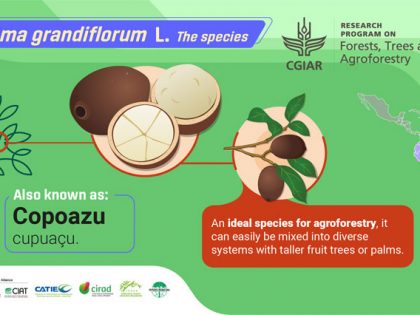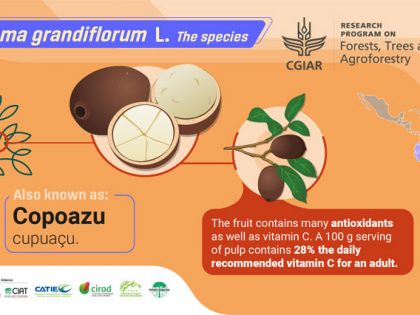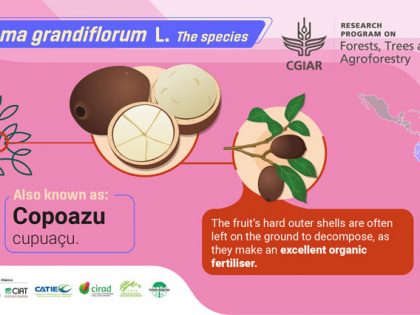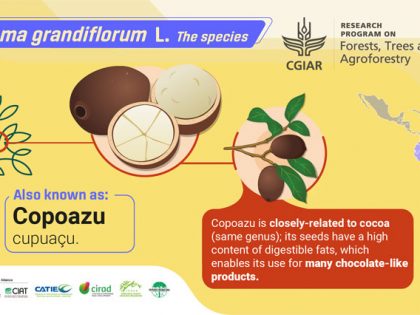Geography
Found throughout Amazonian countries including Brazil, Bolivia, Peru, Ecuador, Colombia, Venezuela, Guyana and Suriname.
Uses
Copoazu is closely related to cocoa; its seeds can be similarly fermented to make chocolate-like products and nut butter. This is because the seed has a high content in digestible fats, in particular oleic acid, which enables its use as a replacement for cocoa butter. When the seed is fermented to produce “chocolate,” it contains about half the antioxidant capacity of cacao chocolate.
The sweet, fleshy pulp of the fruit is also very much appreciated and used to make juices, nectars, jams and ice-creams. Although the pulp’s energy value is low and represents a limited source of calories, it is high in pectin (a soluble fibre and gelling agent) and has a low pH value. These characteristics make it a good candidate to replace food additives in pastry.
The fruit also contains many antioxidants as well as vitamin C, but its nutritional value will decrease if the pulp is not frozen within two to five days of harvest, according to a scientist from UNAMAD. This is a major challenge for the commercialization of copoazu, as most producers do not have access to fast-freezing facilities that maintain nutrients and prevent fermentation.
Despite challenges to establish value chains, there is great potential for market expansion of copoazu. As mentioned above, the seeds can be fermented and transformed into “chocolate” and nut butter. The fruit can also be processed into at least 25 different products, from pastries to cosmetic products, nectars and soaps. In Peru, a promotional campaign by the regional government (GOREMAD) and local NGOs saw cultivation of Theobroma grandiflorum rise from almost nothing to over 1,200 metric tons of fruit per year over a 10-year period (2005–2015).
In agroforestry systems, copoazu behaves like cacao and prefers growing in shaded conditions (the understory). It is an excellent species to mix into a diverse system with taller fruit trees or palms. The fruit’s shell is often left on the field post-harvest and makes an excellent organic fertiliser. Additinally, because copoazu has rarely been domesticated to enhance size and flavour, it is better adapted to its wild environment — more resilient and robust — compared to many cacao-varieties.
If not processed for “chocolate,” the seed of the copoazu is an good fish-feed for aquacultures (fish-and-farming systems).


